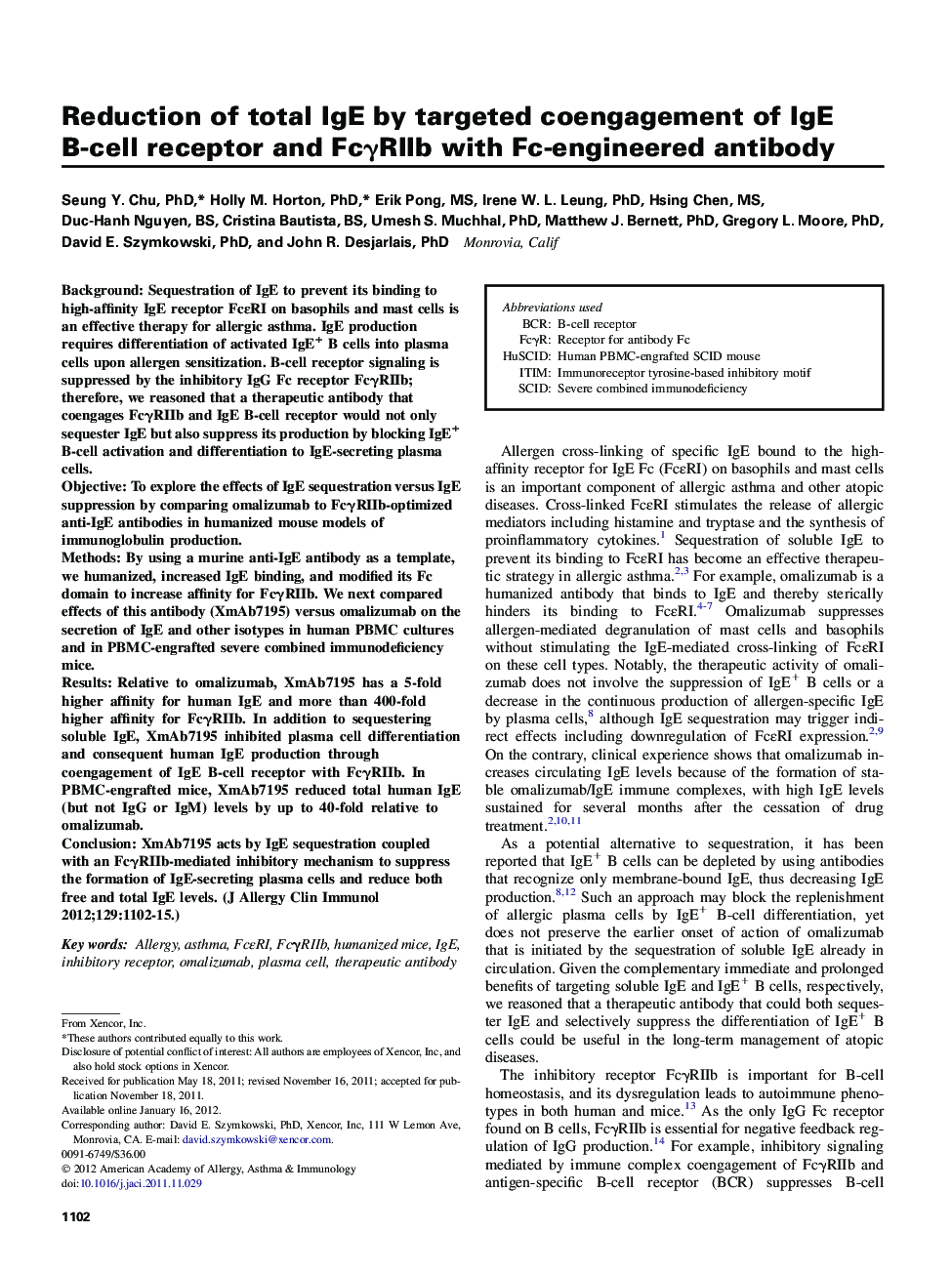| Article ID | Journal | Published Year | Pages | File Type |
|---|---|---|---|---|
| 6066969 | Journal of Allergy and Clinical Immunology | 2012 | 14 Pages |
BackgroundSequestration of IgE to prevent its binding to high-affinity IgE receptor FcεRI on basophils and mast cells is an effective therapy for allergic asthma. IgE production requires differentiation of activated IgE+ B cells into plasma cells upon allergen sensitization. B-cell receptor signaling is suppressed by the inhibitory IgG Fc receptor FcγRIIb; therefore, we reasoned that a therapeutic antibody that coengages FcγRIIb and IgE B-cell receptor would not only sequester IgE but also suppress its production by blocking IgE+ B-cell activation and differentiation to IgE-secreting plasma cells.ObjectiveTo explore the effects of IgE sequestration versus IgE suppression by comparing omalizumab to FcγRIIb-optimized anti-IgE antibodies in humanized mouse models of immunoglobulin production.MethodsBy using a murine anti-IgE antibody as a template, we humanized, increased IgE binding, and modified its Fc domain to increase affinity for FcγRIIb. We next compared effects of this antibody (XmAb7195) versus omalizumab on the secretion of IgE and other isotypes in human PBMC cultures and in PBMC-engrafted severe combined immunodeficiency mice.ResultsRelative to omalizumab, XmAb7195 has a 5-fold higher affinity for human IgE and more than 400-fold higher affinity for FcγRIIb. In addition to sequestering soluble IgE, XmAb7195 inhibited plasma cell differentiation and consequent human IgE production through coengagement of IgE B-cell receptor with FcγRIIb. In PBMC-engrafted mice, XmAb7195 reduced total human IgE (but not IgG or IgM) levels by up to 40-fold relative to omalizumab.ConclusionXmAb7195 acts by IgE sequestration coupled with an FcγRIIb-mediated inhibitory mechanism to suppress the formation of IgE-secreting plasma cells and reduce both free and total IgE levels.
